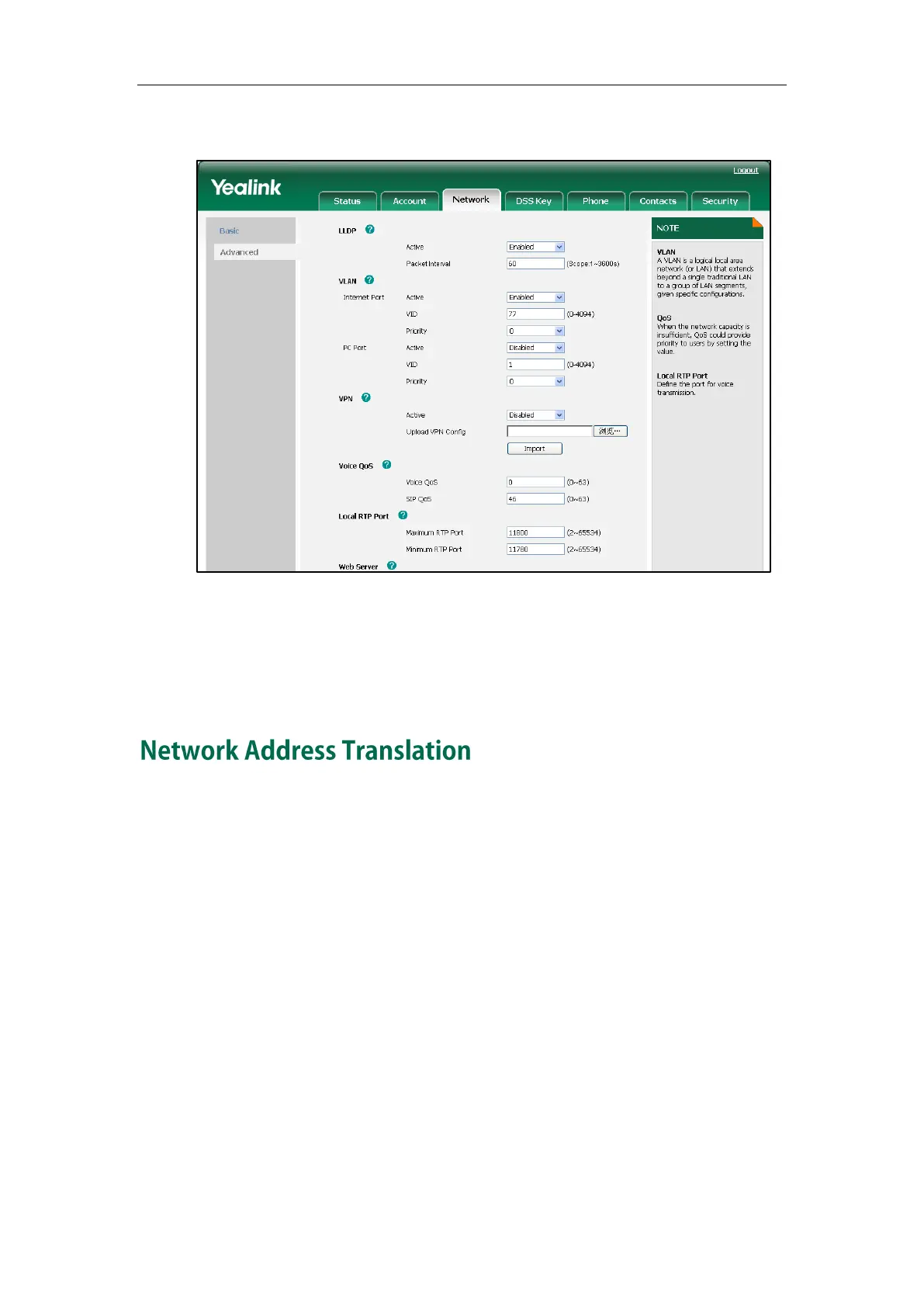Administrator’s Guide for SIP-T3xG IP Phones
168
3. Enter the desired value (0-63) in the SIP QoS field.
4. Click Confirm to accept the change.
The web user interface pops up a dialog box to prompt that the settings will take
effect after reboot.
5. Click OK to reboot the IP phone.
Network Address Translation (NAT) is essentially a translation table that maps public IP
address and port combinations to private IP address and port combinations. This
reduces the need for a large amount of public IP addresses. The NAT feature ensures
security since each outgoing or incoming request must go through a translation process.
But in the VoIP environment, NAT breaks end-to-end connectivity.
NAT Traversal
NAT traversal is a general term for techniques that establish and maintain IP
connections traversing NAT gateways. It is typically required for client-to-client
networking applications, especially for VoIP deployments. STUN is one of the NAT
traversal techniques supported by the IP phones.
STUN (Simple Traversal of UDP over NATs)
STUN is a network protocol, which is used in NAT traversal for applications of real-time
voice, video, messaging, and other interactive IP communications. The STUN protocol
